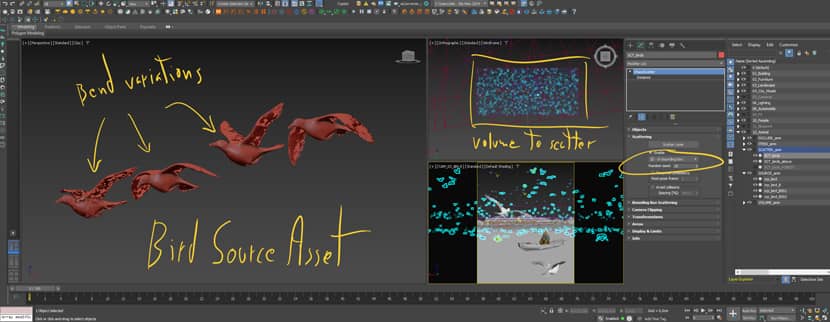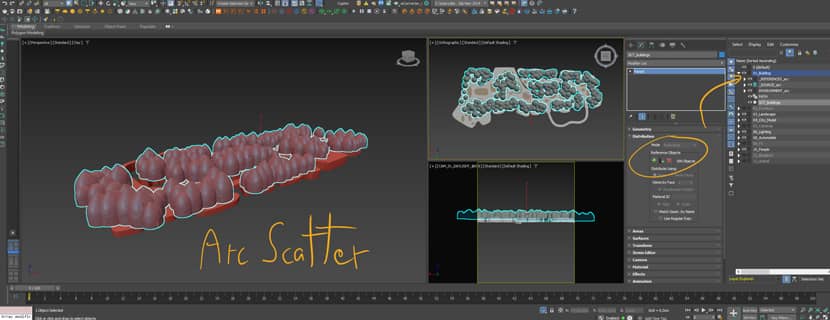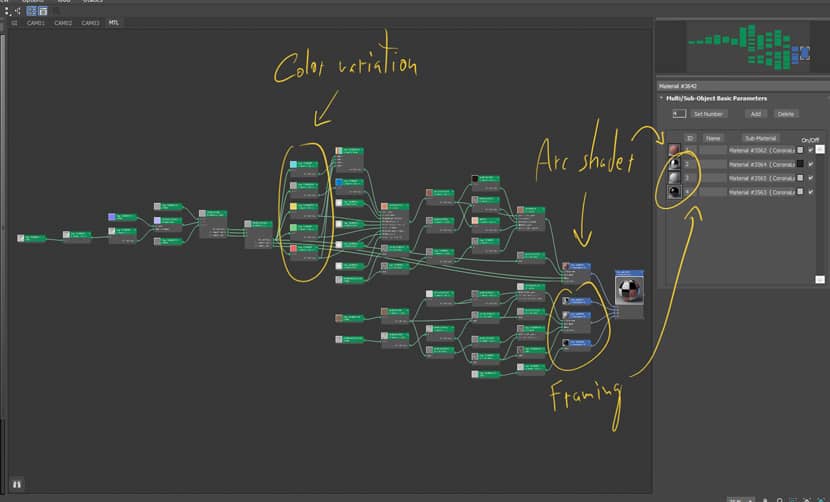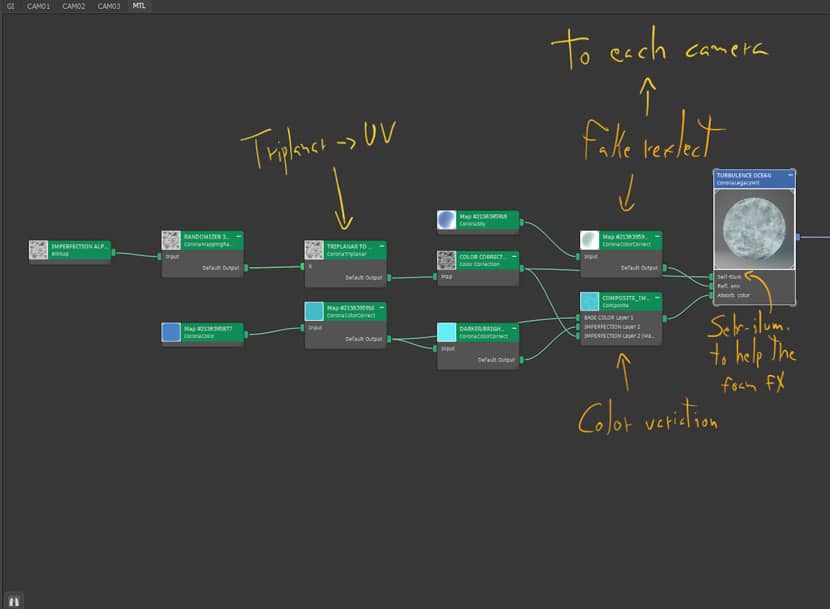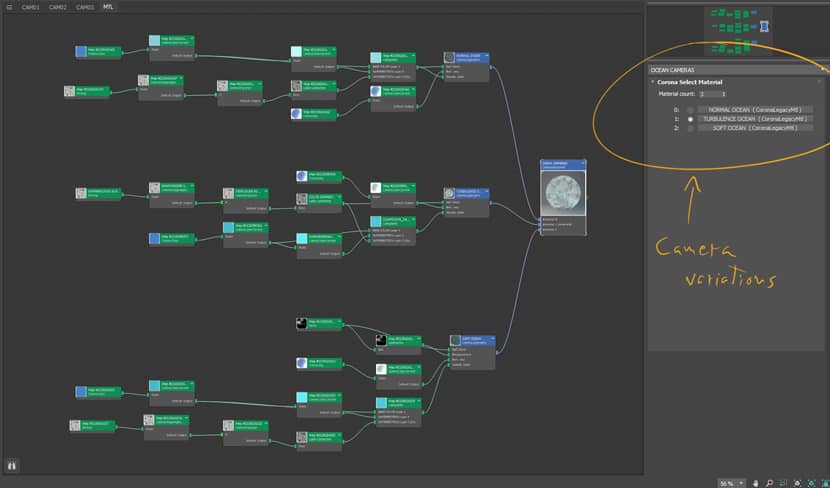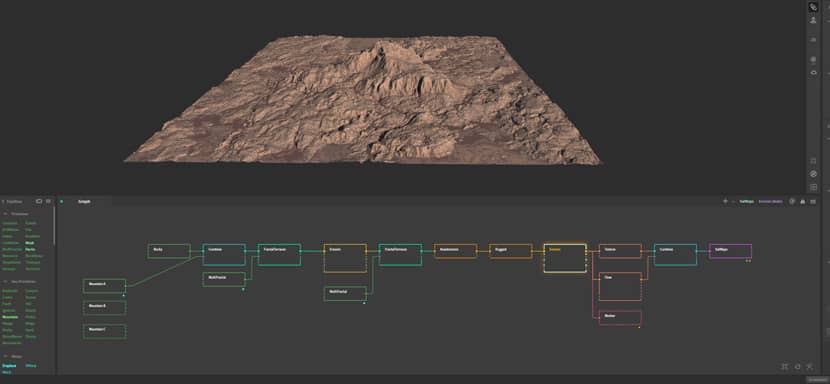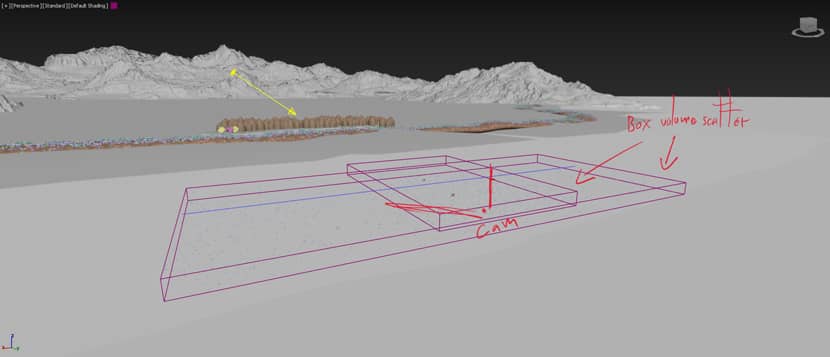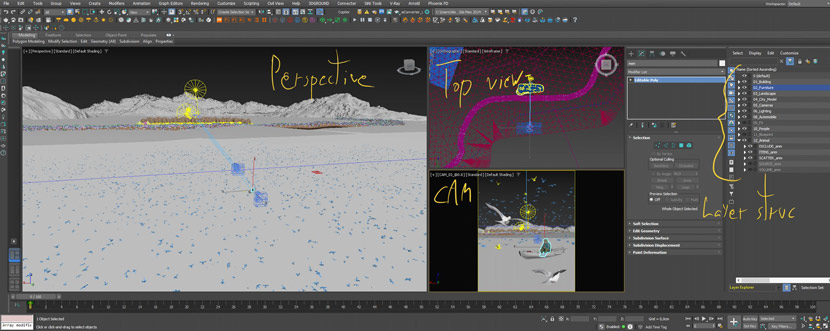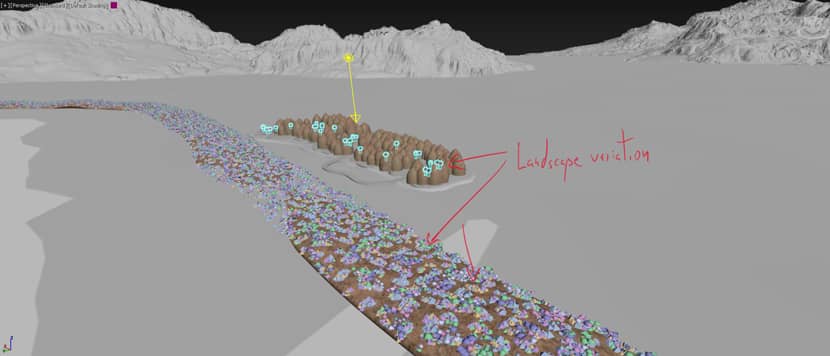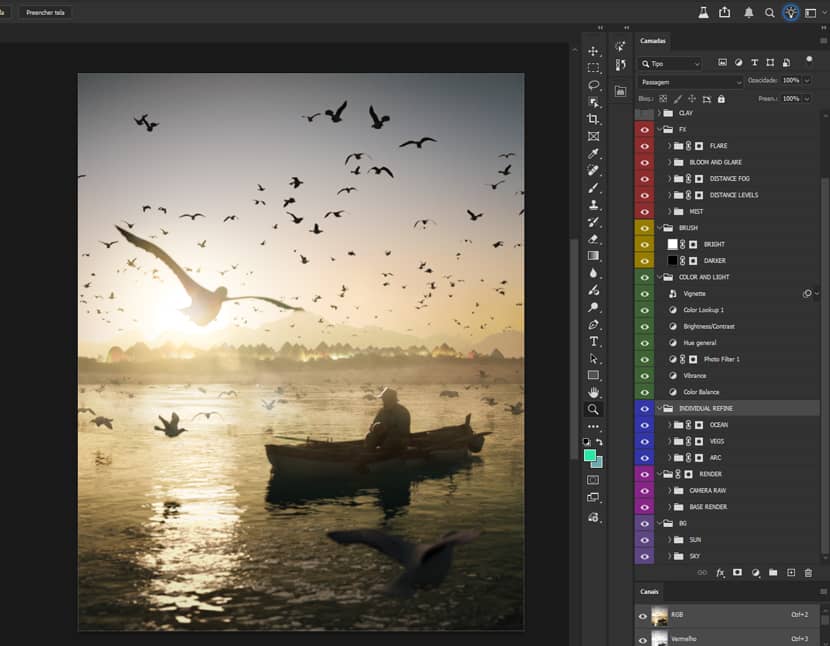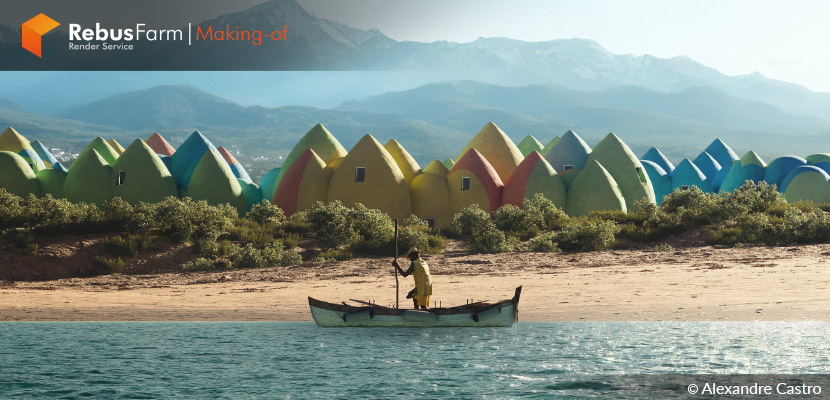
More than technical expertise is needed to bring imaginative worlds to life; curiosity, experimentation, and a strong commitment to storytelling are all necessary. Inspired by ZAV Architects' Majara Residence in Hormuz, Iran, 3D artist Alexandre Castro takes us behind the scenes of his evocative "Majara Hotel" project in this making-of feature. Alexandre creates colorful, poetic visuals from a desolate desert terrain by combining procedural modeling, careful material work, AI-assisted techniques, and a cinematographic sense of mood. Let’s take a closer look at how this striking visual journey came to life from the ground up!
About me.
Hello 3D friends!
I’m Alexandre Castro — a 3D Generalist who’s been immersed in the CGI world for five years now. My journey started back in university, where I studied Civil Engineering but spent more time experimenting with 3D than solving equations. Eventually, I decided to drop engineering and follow what truly excited me: CGI!
I spent the last few years at Elephant Skin, growing through some promotions from Junior to Upper Middleweight 3D Artist, and now I’ve taken a big step forward by joining Binyan Studios’ being part of the London team. It’s been an incredible journey so far, and I’m constantly pushing myself to learn, create, and evolve.
About The Project.
This project, Majara Hotel, is based on the real architectural project “Majara Residence” by ZAV Architects, located in Hormuz, Iran. I wanted to capture not only the beauty of the architecture itself but also the atmosphere that surrounds it — that mix of desert, sea, and the feeling of isolation.
The goal was to create something that feels alive, that has a story in it. I focused on small imperfections, on subtle variations of light and material, so the image doesn’t feel sterile. The main direction was to blend the man-made with the natural environment, finding that balance between control and randomness.

3D Modeling, Assets & Composition.
For the flying birds, I didn’t model anything from scratch. I just picked a random free bird model I found online. The texture quality was already good enough for what I needed since they would appear far away and slightly blurred in motion.
The interesting part here is that I used a Bend modifier inside 3ds Max to vary the wing positions. Because, of course, when you see fifty birds flying in the sky, they won’t all have their wings in the same position.
So, I created four different poses using the Bend tool and used these four meshes to scatter them. I did that using Chaos Scatter, placing them inside two boxes that define their volume of distribution.
Additionally, there were two birds really close to the camera. For those, I preferred to position them manually, so I kept them as Corona Proxies, not part of the scatter.
The architectural modeling followed a procedural workflow — base elements for houses scattered inside the project area to cover large parts of the scene, while the foreground, like the ocean and the man in the boat, received more careful, detailed modeling. The mountains were handled separately in Gaea and brought into the scene with displacement and curvature-based variations in Corona.
Materials & Texturing.
For materials, everything was done in Corona Renderer. One of the main techniques I used was Corona Distance combined with Corona Multimap, applied through rectangular modeled meshes. This setup helped me create those “painted cuts” over the architecture — those slightly worn-out marks that bring storytelling into the surfaces.
For the ocean, I used three different textures, one of which had Noise connected to Self-Illumination to simulate small bubbles and white imperfections on the water surface.
The beach material used Corona Distance again to increase reflection and darken the sand near the shoreline, simulating wetness.
The mountains were modeled in Gaea and detailed in Corona using Displacement driven by Curvature masks, with everything mapped via Triplanar mapping to avoid UV work.
All these material choices were intentional, aiming for realistic variation and to help tell a story through surface behavior.
Environment.
For the environment, the main goal was to bring that feeling of heat, dryness, and atmosphere. I used volumetric fog with different densities to give depth and that dusty desert look.
Lighting was done with a CoronaSky, but I manually adjusted it through LightMix to make the light warmer and harsher. The final setup gives that sunburnt tone to the colors — like everything has been exposed for too long under the sun.
Rendering.
Everything was rendered with Corona Renderer inside 3ds Max, and post-production was done in Photoshop.
I also applied some enhancements using a workflow that I developed with a friend, entirely built in ComfyUI.
Recently, I’ve been testing the new Denoising feature from Corona, and honestly, it’s been excellent — it saves a lot of render time while maintaining high-quality results. It’s impressive how clean the final image can be without losing any definition.
I also use a wide variety of render passes and masks, all of which are preset in my MaxStart file. I usually extract every possible element: Reflect, Refract, Direct Light, Indirect Light, SourceColor, and several RGB masks — by material, by object, and even Wirecolor or instance-based ones.
Do I use all of them? Not really. But when I need them, they can be life-saving — especially SourceColor, which I find amazing for recovering information, and Reflect, which is great for isolating highlights and etc.
AI (Artificial Intelligence).
This part was really fun. I used ChatGPT to generate an image of a man sitting in a canoe, fishing. I made several adjustments until the image matched what I needed. Then I sent it — with a white background to make it easier — to Tripo3D, which scanned it and turned it into a 3D mesh.
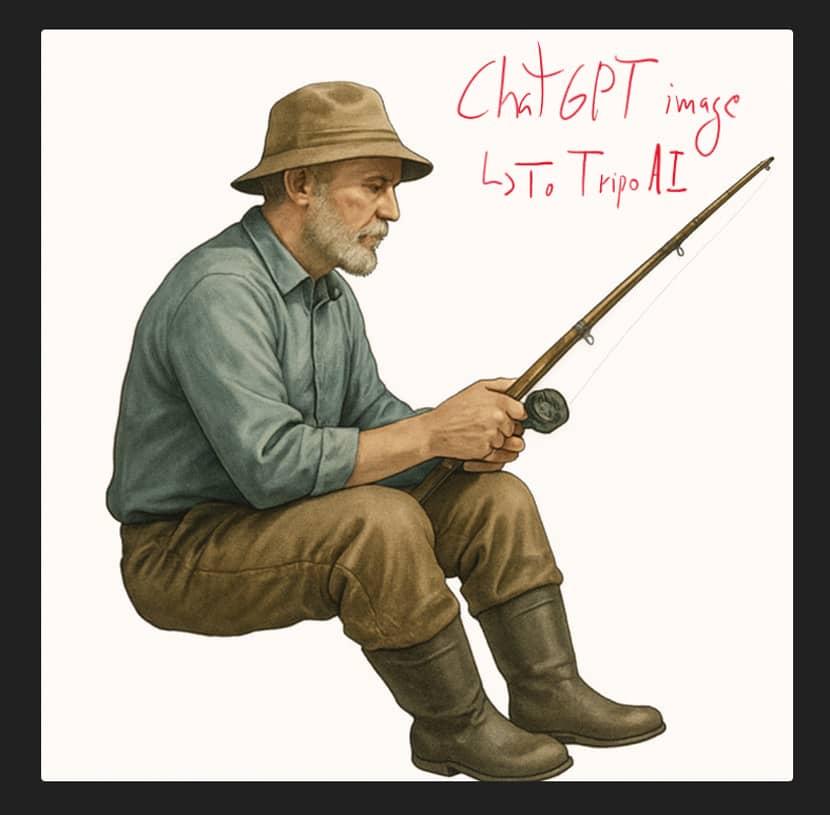
That’s how I got the 3D model of the man in the boat. I did the same for another figure — a man standing and holding a branch.
Both characters were created through this combination of ChatGPT-generated images and Tripo3D scanning.
The scan quality isn’t great, but then comes the next step — ComfyUI.
Back at Elephant Skin, I worked with Lucas Vendreira to create a workflow called AI People Enhancer, which uses over 80 nodes to enhance 3D people assets into photorealistic ones. It provides a huge range of controls and variations to fine-tune the final look.
I used that same workflow here to bring the scanned characters to a higher level of realism. It made a huge difference in integrating them naturally into the final composition.
Post-Production.
One of the images — the one with birds — was mostly full CGI, with minimal post-production. I focused on enhancing atmosphere and subtle storytelling. The ocean, foreground, and characters were all CGI.
For the other images, I incorporated matte painting to fix backgrounds and elements like mountains and dolphins. I also used a Topaz filter effect inspired by Franzão and Nicolas, giving some images a painterly quality that feels more like visual art than purely architectural representation.
I rely heavily on procedural adjustments in Photoshop — things like Levels, Curves, Hue & Saturation, and Vibrance. This way, my post remains as flexible and non-destructive as possible.
Since I often go through multiple render iterations during production, I structure my PSDs to make them easy to update.
Here’s a tip: I keep all my blending settings inside groups named after each render element, instead of applying them directly to the element layer. That way, when a new render comes in, I just drop it into the right group — masks and blending remain intact. It makes the workflow easily 200% more efficient.
Conclusion.
This project was really fun and interesting to create. I truly love working on personal projects — honestly, almost every weekend I’m doing some kind of study or personal piece. I find them extremely important because they let us develop skills that we don’t always get to use in client work.
It’s also where the experimental side shines. I think going experimental — even in a sort of “academic” way, like running visual experiments — helps us grow a lot. We get to test things, see what works, what doesn’t, and what doesn’t yet but could work with a bit more understanding.
I’d like to thank Franzão and Nicolas, who created that painting effect in Topaz and also inspire me a lot. Thanks as well to Lucas Vendreira for developing and working with me on the People Enhancer workflow.
And of course, a huge thank you to RebusFarm and Vasilis from VWArtclub for inviting me to do this making-of. This means a lot to me!
Anyone who follows my work knows how much I enjoy writing making-ofs and sharing insights behind my images — so this is honestly a big personal achievement.
Thanks again to all the Archviz community for the support, and I hope we can do more collaborations in the future.
Make sure to check out my work on the social medias — and also the incredible work of the studio I’m currently working and already producing some images: Binyan Studios.
Final Images.
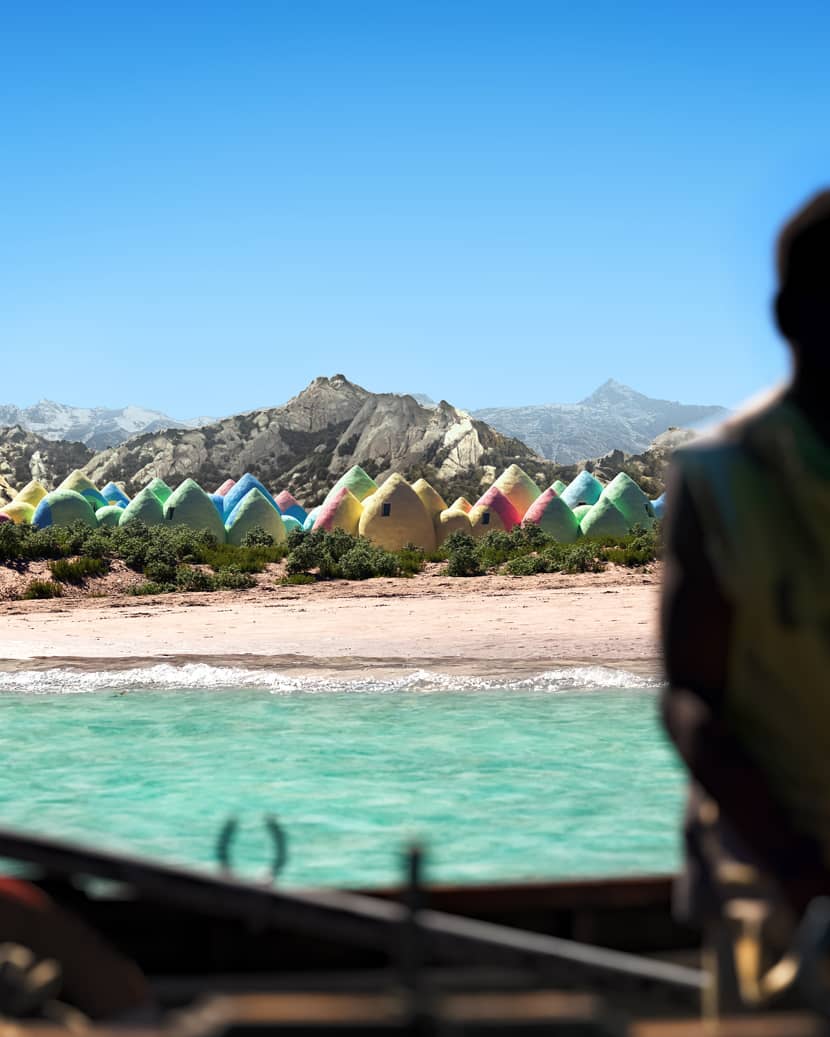
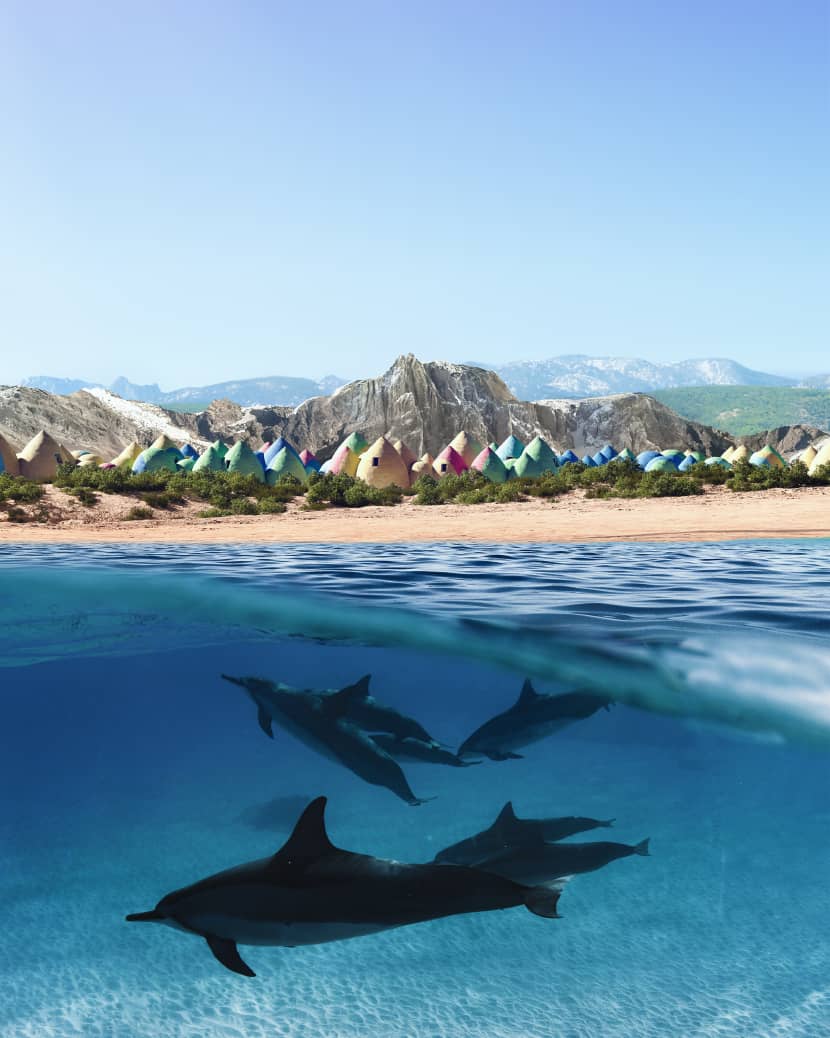
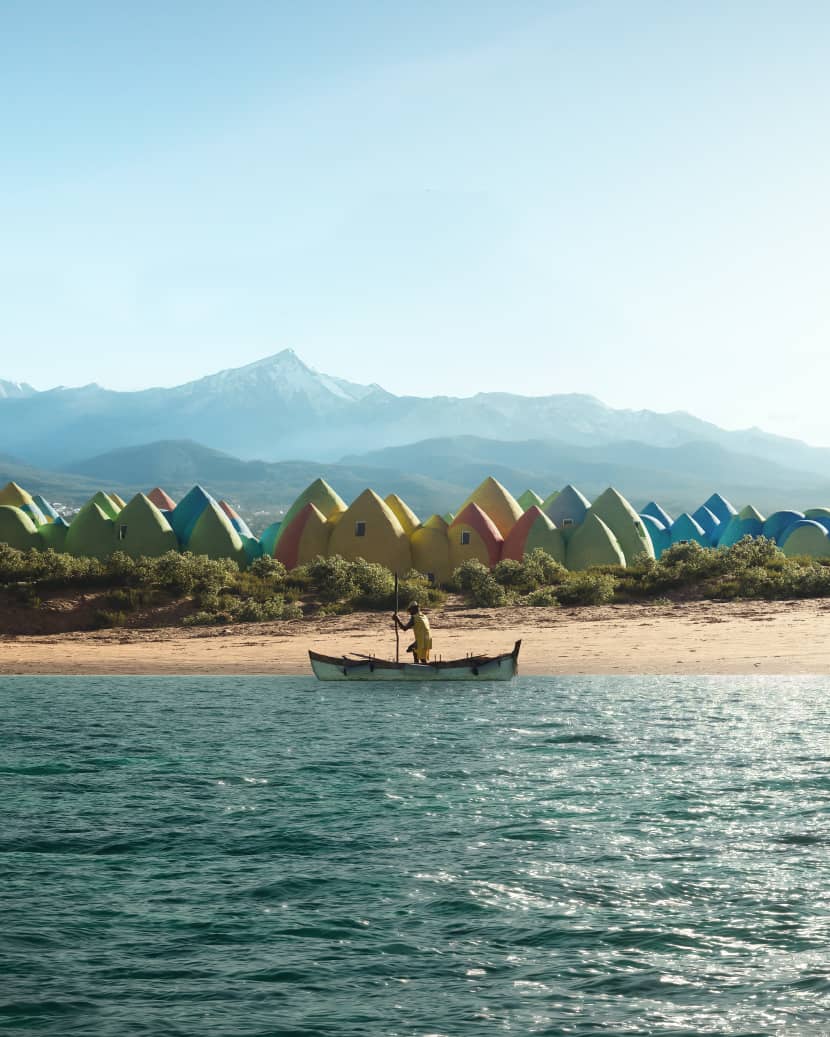

Best,
Alexandre Castro.
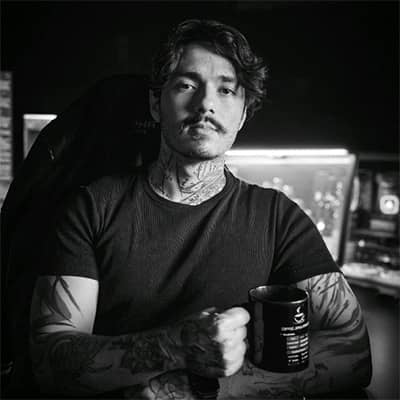
About the artist
Alexandre Castro is a 3D Generalist with five years of experience in CGI, known for his experimental approach and strong emphasis on storytelling through visuals. Originally trained in Civil Engineering, he shifted his focus entirely to digital imagery, rapidly evolving through roles at Elephant Skin before joining the London team of Binyan Studios. Alexandre’s work blends procedural workflows, atmospheric lighting, and cutting-edge AI tools, resulting in images that balance technical precision with artistic expression. Constantly learning, creating, and exploring new methods, he continues to push his craft forward through both client work and personal projects.

